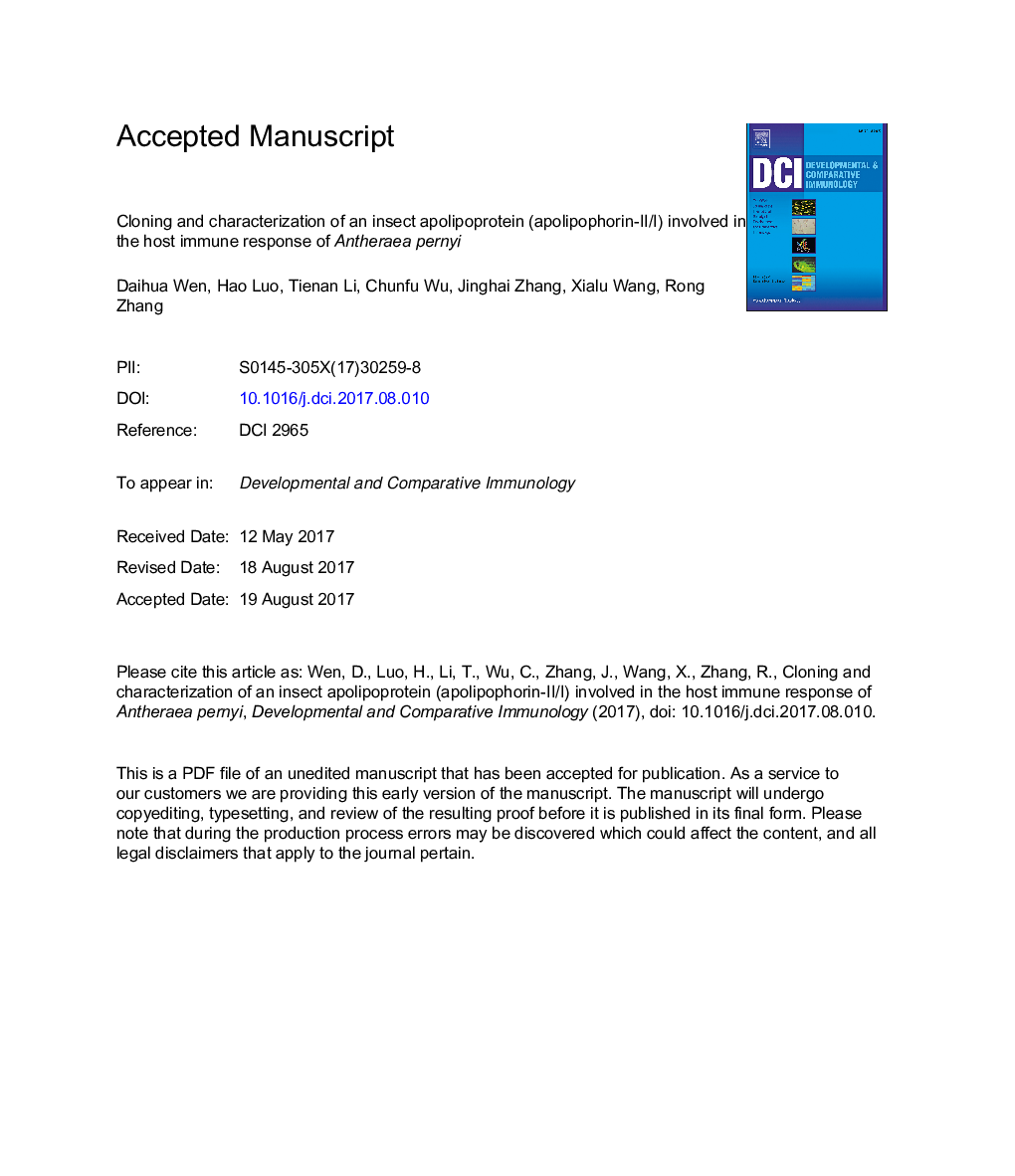| Article ID | Journal | Published Year | Pages | File Type |
|---|---|---|---|---|
| 5540067 | Developmental & Comparative Immunology | 2017 | 22 Pages |
Abstract
Apolipoproteins are protein components of lipoprotein particles, and are increasingly recognized to be functioning in the innate immune systems of both insects and mammals. Mammalian apolipoprotein B (apoB) is associated with a diverse range of innate immune defenses including suppression of bacterial pathogenesis, virus toxicity neutralization, and inhibition of cytokine releases from immune cells. However, little is known about apoB homologous insect apolipophorin-II/I (apoLp-II/I) in controlling of specific pathogen-host encounters such as microbial infections. In the present study, we describe cDNA cloning and characterization of an apoLp-II/I from Chinese oak silk worm, Antheraea pernyi. The apoLp-II/I cDNA is 10237bp in length, which possesses an open reading frame encoding 3305 amino acids. A consensus cleavage site RGRR presenting from Arg710 to Arg713 implies posttranslational cleavage of this protein. Ap-apoLp-II/I shares high sequence identities with apoLp-II/I in lepidoptera and other insects. In addition, considerable similarities also exist between Ap-apoLp-II/I and human apoB, which basically positioned in first 1000 residues of the amino termini. Tissue distribution and time-course expression results demonstrate that Ap-apoLp-II/I transcripts were detected predominantly in the fat body, less in epidermis and rarely in midgut, while the synthetic apoLp-II/I protein was abundant in hemocytes and plasma instead of the fatbody. Expression of Ap-apoLp-II/I was stimulated in response to bacterial challenge. In addition, our preliminary studies established a novel role for Ap-apoLp-II/I in regulating prophenoloxidase activation system. Taken together, apoLp-II/I may play an essential role in innate responses of Antheraea pernyi.
Related Topics
Life Sciences
Biochemistry, Genetics and Molecular Biology
Developmental Biology
Authors
Daihua Wen, Hao Luo, Tienan Li, Chunfu Wu, Jinghai Zhang, Xialu Wang, Rong Zhang,
